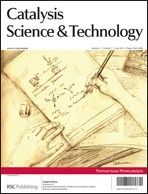Polycrystalline CuInS2 chalcopyrite thin films were formed on a Mo-coated glass substrate by annealing of spray deposited precursor films in a sulfur atmosphere. Structural and photoelectrochemical analyses of CuInS2 films obtained by annealing at 500 °C and 600 °C revealed that a well-defined crystalline film was obtained by the 600 °C annealing. Owing to these favorable properties, the solar cell with an Al:ZnO/CdS/CIS/Mo/glass structure based on the 600 °C annealed CuInS2 film showed higher conversion efficiency than that obtained on the cell derived from the 500 °C annealed CuInS2. Partial incorporation of Ga in the CuInS2 film with a Ga/In ratio of ca. 0.2 to form a Cu(In,Ga)S2 mixed crystal without any reduction of photoelectrochemical properties can be achieved by introduction of a Ga source in the sprayed solution. As a result, the solar cell based on the 600 °C annealed Cu(In,Ga)S2 film showed the best conversion efficiency (5.8%) of the present sprayed chalcopyrite films. By introduction of a CdS thin layer followed by loading Pt deposits, moreover, the 600 °C annealed Cu(In,Ga)S2 film worked as a photocathode for photoelectrochemical water splitting with applied bias potential of >0.65 V.

You have access to this article
 Please wait while we load your content...
Something went wrong. Try again?
Please wait while we load your content...
Something went wrong. Try again?


 Please wait while we load your content...
Please wait while we load your content...